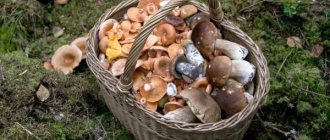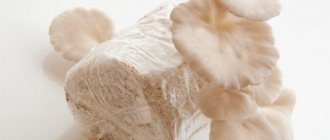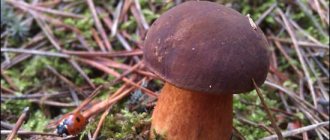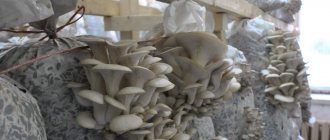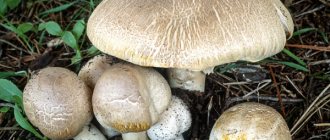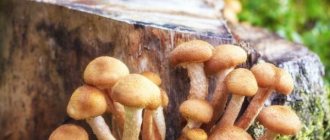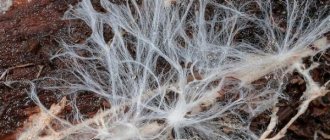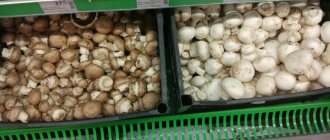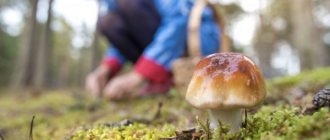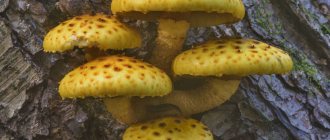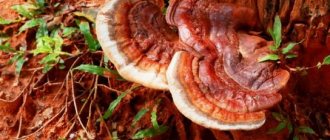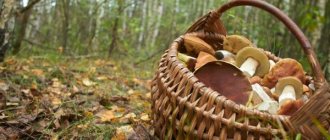Have you already started growing your own mushrooms ? There are two very good reasons to grow your own mushrooms. The first is that you don’t have to pay too high a price in the supermarket, and besides, growing such tasty things as mushrooms yourself is much better. What you grow, you cannot buy at any price.
Home gardeners in China have been growing their own mushrooms for over 1,000 years, and it has finally come to America and Europe. Rather than being associated with witches or psychedelic drugs, mushroom cultivation has moved into the culinary realm throughout the world. And growing your own mushrooms means producing truly excellent fresh food without relying on the luck of the hunt.
The most reliable (and most fun) way to grow mushrooms at home is with a mushroom kit, which makes a great winter tabletop project. Depending on the kit, you can grow several types of gourmet mushrooms within a few weeks, including oysters (Pleurotus spp.) and shiitake mushrooms (lentinula edodes), as well as various button mushrooms (Agaricus bisporus). Then you can move on to more sustainable outdoor projects, such as growing oysters in boxes or shiitakes on logs. You can even introduce delicious wine caps (Stropharia rugoso-annulata) to old compost heaps or a shady area of your garden, where they tend to naturalize on their own. Start with these simple species and you may soon find yourself dreaming of growing cinnamon caps, lion's manes or black poplar mushrooms.
“It's really fun to grow your own mushrooms,” says mushroom expert Thomas Wolk, a biology professor at the University of Wisconsin-La Crosse. He describes growing mushrooms as more of an art than a science, which involves “a lot of observing, tweaking, figuring out what works.” Although mushrooms tend to be slow to bear fruit compared to vegetables, once they are established in a suitable location, they often persist in that location for a very long time, bearing fruit continuously for many years.
This is the best part: you can start with a mushroom kit right now by growing your mushrooms indoors and then use the leftovers to start a more permanent outdoor colony. Pavel Stamets, founder of Fungi Perfecti of Olympia and author of six books on mushroom culture, says this is because “the mushroom mycelium is hungry. He wants to run.” Like a sourdough bread culture, a good strain of fungus will keep going and going when the right growing conditions are provided.
Oyster mushrooms
To start producing these mushrooms at home, you will need a small room (garage, cellar or greenhouse), some equipment, mycelium and substrate.
The room needs to be disinfected (maybe with white), shelves for the substrate should be installed in 2-3 tiers, and lighting should be installed. Maintain optimal temperature (16-18°C).
You can buy mycelium ready-made in a store or prepare it yourself. The substrate includes cereal straw, sunflower and buckwheat husks, and sawdust. They need to be mixed, crushed and filled with hot (70-80°C) water for a day. Then strain and put in strong plastic bags. Make cross-shaped cuts on the sides for ventilation. Place the bags on shelves at a distance of 5 cm from each other.
The oyster mushroom mycelium must be buried 3-4 cm into the substrate and sprinkled with a thin layer of earth on top.
After 7-10 days, thin white threads will appear - this is the mycelium sprouting. Now you can remove the film and turn on the lighting for 3-4 hours a day. As the substrate dries, carefully moisten it. After 2-3 weeks the first wave of mushrooms will appear.
Features and Benefits
The mushroom business, like any other, has some disadvantages along with its advantages. Before you start growing mushrooms for sale, it is useful to familiarize yourself with all the pros and cons in order to decide whether this activity is right for you.
Benefits of growing mushrooms:
- the products are environmentally friendly and safe - you can provide your family with a valuable protein product;
- a great idea for a business - if you put mushroom cultivation on stream, you can make good money, since mushrooms are in stable market demand;
- there is no need to invent or invent anything - the technology is well thought out, you just need to follow the instructions;
- no expensive equipment or large start-up investments are required;
- Growing mushrooms can be done throughout the year - in the basement or at home.
Minuses:
- The harvest of mushrooms is influenced by various factors - problems with ventilation, lighting, temperature conditions;
- In order to quickly pay off the costs associated with opening a mushroom business, large-scale and diligent work is required, as well as reliable sales channels;
- when growing mushrooms on a mass scale, it is necessary to wear special clothing and protective equipment;
- if the farm is located in the basement, you have to spend a lot of time in an unfavorable environment;
- you need to find not only a room with a suitable area - if we are talking about growing mushrooms for sale, but also provide an appropriate microclimate there.
It is still unknown whether there is a harmful effect of fungal spores on the human respiratory system. Since there is no exact information on this matter, it is recommended to wear a respirator when working with mushrooms.
Shiitake
They reproduce best on tree cuttings. If there are tall stumps left in the garden after pruning (at least 0.5 m), they are ideal. Such columns need to be well watered for 1.5-2 months. Then use a thin drill to make several holes 10-12 cm deep.
Shiitake is most effectively replanted using wood sticks with mycelium. They are placed in prepared holes on the stump and sealed with garden varnish. If you plant the mushrooms in the fall and the wood is sufficiently moistened, the shiitakes will begin to develop in the spring and the first grass can be harvested.
What is a mushroom farm?
A mushroom farm is an effective tool for growing mushrooms that come in a wide variety of varieties. These can be small cardboard boxes, or huge rooms in which hundreds of kilograms of champignons, oyster mushrooms or other mushrooms that are in market demand are grown.
There are several growing methods:
- On the beds. This is an economical method that requires film and compost. The downside is that it depends on the season.
- In bags. Substrate is poured into them, holes are made and hung.
- In briquettes. A modern method in which the mixture is pressed into briquettes. Plus, it makes maintenance easier.
- In containers. This is an American technology in which soil with mycelium is placed in plastic or wooden containers that have been pre-treated against mold.
It is believed that a mushroom farm with potential for development should occupy an area of at least 1 sq.m. Smaller scales also allow you to make a profit, but they do not provide any special opportunities for business growth. It is possible to grow mushrooms for yourself - this allows you to save your budget on purchasing mushroom products.
Champignon
To grow such mushrooms in the garden, you need to choose a slightly shaded place, preferably under fruit trees. Can be planted in spring or autumn.
Dig up an area around the tree with a diameter of 1.5-2 m to a depth of 20-25 cm. Then spread fallen leaves, finely chopped branches, pine needles, and moss on the prepared soil. Water well. Carefully spread the mycelium and sprinkle the removed soil on top.
In dry weather, the clearing needs to be watered 1-2 times a week.
Is it possible to build a business on a mushroom farm?
There is quite a lot of competition in the mushroom market - their cultivation has already been put into production, so you can’t count on big profits. And most importantly, before starting a business, you need to make sure that there are markets.
What you need to open a champignon farm
When starting a business, be sure to analyze the local market in terms of supply and demand. Find out more about future competitors and business risks, master growing technology.
What you will need to start a business:
- Room. Its area should correspond to the scale of production, and its features should correspond to the conditions for growing specific mushrooms. From an area of 100 sq. m harvest 2-4 tons.
- Permission. It is recommended to register as an individual entrepreneur.
To do this, you need to submit an application to open production and pay a state fee. Enter OKVED code 0 1.13.6 “Cultivation of truffles and mushrooms.” To obtain permission, you must submit documents on radiological control, a phytosanitary certificate, certificates of compliance with GOSTs and relevant instructions. - Equipment. To grow mushrooms for sale, you will need an air conditioner, a thermohydrometer, lamps, scales, a steam generator, a boiler for heating water, and a refrigerator. You will also need boxes, shelves, pallets - depending on the chosen growing method.
- Staff. For a small business you will need 3-4 people. They will plant mushrooms, care for the harvest, collect products, process the premises, and maintain optimal conditions.
You can increase the area due to tiers - mushrooms can be grown on several floors. It is also necessary to organize an irrigation system - automatic or manual.
Where to sell finished products?
A prerequisite for the success of a mushroom business is reliable markets. Mushrooms grow constantly, they cannot be stored for a long time, so you need to have several points of sale - to be on the safe side. You can also organize your own point of sale at the market, equipping it with a large refrigerator.
Where can you sell finished products:
- to grocery stores;
- to supermarkets;
- to processing plants;
- resellers;
- to cafes and restaurants.
Experts assure that to start a mushroom business you need at least 700,000 rubles. The money will mainly be used to purchase equipment for growing mushrooms and maintaining the microclimate.
Current expenses per month - 70,000 rubles. The money goes to pay rent, water, electricity, taxes, and salaries to employees. The first mushrooms will be collected only 2 months after the start of the business, so in general, about 1 million rubles will be required to start the business.
1 kg of mushrooms (champignons) retails for about 250 rubles. Wholesale price - 150 rubles. Per 100 sq. m you can collect 2000 kg per month. One mycelium produces 6 harvests. Total per year - 1,800,000 rubles. Profit for the month - 150,000 rubles. Profitability - 25-40%. The business pays for itself in a year or more.
The mushroom business is not without risks:
- Mushrooms may not sprout or die. Such a disaster often happens to novice entrepreneurs who, without sufficient experience, immediately organize large plantations.
- You may be left without a harvest due to diseases or pests. Strict adherence to technology, regular ventilation and cleaning helps to minimize risks.
- It is not always possible to find buyers. Selling the entire harvest is problematic.
Growing mushrooms is an interesting and promising activity that can become a hobby, a business, or just a help in the household. It all depends on the scale and interest of the person who decides to grow mushrooms for the family or for sale. This business does not bring any special profits today, but with proper organization it can easily become a stable source of income.
0
0
Copy link
Koltsevik
It is grown in a greenhouse. Optimal temperature is from +10 to +30°C. When planted in May, the harvest is harvested in late summer.
Recent Entries
Lilac perennials that are beautiful, compact and do not crowd out other plants Why when buying seedlings you should not take the sellers’ word for it and how to determine the age of the plant using 3 signs Tomato seedlings have turned purple or whitish: why the color has changed and how to save the plants
For a plot of 1 m2 you will need 25 kg of hay. It needs to be moisturized abundantly for 5-7 days. Then form beds 25 cm high. At a depth of 7-9 cm, lay out pieces of mycelium at the rate of 120-150 g per 1 m2. Place covering material on top and water the plantings through it.
After a month, the shelter is removed, and soil is poured on top of the hay in a 5 cm layer. You need to water regularly, avoiding drying out and waterlogging of the soil.
Types of mushroom farm
The structure of a mushroom farm depends on its purpose - it can be designed to grow products for one’s own needs or for sale. The second option can have an unlimited scale - it turns out to grow both several tens of kilograms and several tons per month.
Mushroom farm in general
A home farm can be organized in almost any available space. The main thing is that it is warm, there is ventilation and other conditions for favorable growth of mushrooms. The simplest home farm can be set up in a basement, greenhouse, or barn.
Regardless of the type of room, a mushroom grower will need the following equipment:
- climate system;
- racks;
- lighting;
- refrigeration equipment;
- steam generator.
A more accurate list is compiled depending on the type of mushroom chosen, the method and scale of cultivation, and other nuances.
Mini mushroom farm for home cultivation
A mushroom farm is a fairly simple set with which products are grown at home.
What does a mushroom farm consist of:
- cardboard box;
- mycelium (mycelium).
The size of the boxes can be different, there are larger ones - 20x13x6 cm or 8x10x4 cm. This is a very small volume, designed for growing mushrooms for home use. If we are talking about business, then such mini-farms will not bring much income, but they may well become a serious help for the family budget.
Manufacturers and suppliers of farms for growing mushrooms assure that they can be placed in any place convenient for the owner, and they can grow:
- Champignon;
- oyster mushrooms;
- White mushrooms;
- boletus and other types.
One box costs 150-200 rubles. The exact number of mushrooms grown in one box is not specified. Experience shows that from this it is possible to grow about 1 kg of product.
How to “start” a mushroom farm:
- Open the package. To do this, cut off its top along the cutting line. All instructions about this are right on the box.
- Regularly spray the mycelium with water - 2-3 times a day.
About a month after the start of watering, it will be possible to harvest.
Before ordering a large number of sets, buy 2-3 pieces with oyster mushrooms or champignons to experiment. This method of growing mushrooms, along with its advantages, also has several disadvantages.
Pros:
- you can grow mushrooms anywhere - at home, on the balcony, in the country house, in the barn, in the basement;
- your own mushrooms are cheaper;
- it is possible to obtain environmentally friendly products;
- you can make money by growing mushrooms by planting pieces of mycelium in different containers;
- Various types of mushrooms are grown.
Minuses:
- you need to water regularly (several times a day);
- small volumes of grown products;
- there is no guarantee that the mushrooms will grow.
You should not think about any business when buying such sets. Firstly, we are talking about small volumes. Secondly, even if agricultural practices are followed, the mycelium does not always grow. For sale, mushrooms are grown in spacious rooms where compost with mycelium is placed.
Polypores
These are parasitic fungi that eventually lead to the death of the tree. Or growing directly on fallen, dead trunks. It is impossible to grow tinder fungi at home.
Only in laboratory conditions is it possible to maintain the required environment. For many years, scientists have been trying to solve the problem of cultivating polypores, since they are actively used in the pharmaceutical industry. But to no avail.
Butter
They can be grown from purchased mycelium or mycelium taken at the place of growth. You need to dig out the mycelium carefully, without shaking off the soil.
Prepare the area by digging under the same tree from which the mycelium was taken, an area with a diameter of 1.2-1.5 m for half a shovel. Lay a small layer of leaves, plant debris from the beds, and pine needles. Water generously. Place the mycelium or mycelium in a checkerboard pattern and lightly sprinkle with soil. Water again. When planting in autumn, cover the bed with straw or leaves.
Grow Mushrooms for Your Health
Mushrooms are surprisingly nutritious, being low in calories, with very little fat and cholesterol. An average serving of five small mushrooms contains 2 grams of protein, almost as much potassium as a banana, and three important B vitamins. Mushrooms are also a valuable source of selenium, a nutrient found in meat that can be deficient in vegetarian diets.
The same mushrooms you eat for dinner may also have important medicinal properties. A number of studies are currently evaluating the effects of mushrooms on breast cancer in postmenopausal women and prostate cancer in men. Other studies are examining the use of dietary supplements made from shiitake, oyster, and reishi mushrooms as a natural way to lower cholesterol.
White mushrooms
Boletuses are very picky about the symbiont tree. They need to be planted under a birch, oak, hornbeam, pine or spruce tree that is at least 50 years old. Dig up the area to a depth of 25-30 cm with a diameter of 2 m. It is good to line it with moss, fallen leaves, small twigs of birch or pine. Sprinkle generously for 2-3 days. Spread the mycelium evenly, every 30-40 cm. Water again without washing out the planting material, cover with moss and sprinkle with soil.
The process of growing forest mushrooms
First of all, you should visit any garden store and purchase mycelium there. It is with its help that fungi reproduce. You can take any: chanterelles, oyster mushrooms, white ones.
If the store does not have suitable mycelium or it is not available for sale at all, you can prepare planting material yourself.
To do this, take several large, overripe mushrooms. They should crumble easily. By hand or using a suitable tool, process the mushrooms into small pieces. Then they are simply scattered over those areas where the future mushroom clearing is planned. Such homemade mycelium is practically no different from purchased one, because it also contains a large number of spores.
Using this method, you can plant any mushrooms: champignons, chanterelles, boletus, saffron milk caps.
Chanterelles
Chanterelles grow under any trees except fruit trees. They bear fruit abundantly and vigorously from early spring until late autumn. If the winter is warm, you can harvest in both December and January. They are never wormy.
The bed for chanterelles needs to be prepared in the same way as for saffron milk caps. The best time for planting is October. From May you can get the first harvests.
boletus
Mycorrhizae are best formed with birch, aspen, and pine. They need to be grown from purchased mycelium or mycelium brought from the forest. The beds should be made in a well-lit area, the trees should be chosen young. The mycelium should be buried no more than 5-8 cm. Autumn planting is preferable. Watering from spring to autumn - 2 times a week. Boletus flowers bear fruit from June to October.
- Author: iarriba
Rate this article:
- 5
- 4
- 3
- 2
- 1
(3 votes, average: 2.3 out of 5)
Share with your friends!
A Few Facts About Mushrooms
Mushrooms are the fruiting bodies of fungi that grow very differently from plants. Beginning as dusty spores released from gills or pores under the cap, mushrooms spend most of their lives as mycelium—a network of moist fibers that use powerful enzymes to penetrate wood or other organic matter. Chemically, mycelium does the exact opposite of what plants do. “This is the downside of photosynthesis,” says Stamets. “Mushrooms consume carbon and consume oxygen, while plants consume carbon dioxide and create carbon and oxygen.” Carbon-rich materials that tend to break down slowly, such as wood, are the preferred substrate for many culinary mushrooms, but the fungus works in almost all every environmental situation. “Fungi drive decomposition cycles and enable natural biological systems to function,” says Stamets. “They are tremendous allies for the health of people and the planet.”
To date, more than 14,000 species of mushrooms have been identified, but only about 250 species are edible plants. Many species of the most delicious mushrooms cannot be grown; they can only be found in the wild, and not grown. But some of them can be grown using an approach that is similar to the one we use to grow regular plants. Start with a simple strain suitable for your region (most often sold as spawn, which is the young mycelium), provide it with a suitable substrate that can feed on and a moist, shady area, and be prepared to provide water or a change in temperature at critical times.
The reward for your efforts will be some of the freshest, most delicious mushrooms you've ever eaten. Don Simoni of Mushroom Adventures, a San Francisco kit company, says, “Many mushrooms on the market are three to five days old before you buy them, but they're only really good for two days and then the flavor changes. ”
You also need patience to grow mushrooms because they only bear fruit when the conditions are well prepared for them. Stamets says, “I believe that fungi take a very long view of their habitat, and they are community-based,” meaning that fruiting is intended to serve both the fungus and the ecological system it calls home. Edible mushrooms are a minor by-product of this process.
The easiest culinary mushrooms to grow at home are oysters, shiitakes, wine caps and portobellos, but there are many more types and possibilities. Let's take a closer look at the four mentioned above:
Oysters (oyster mushrooms)
Oysters vary in flavor, but are generally considered milder than shiitakes, and they have a fine texture that makes them difficult to ship, so they are rarely seen in stores. The stems are a little tough, but the oyster caps are delicious fried and served on a sandwich. In the wild, oyster mushrooms are major decomposers of recently dead trees, especially low-density hardwoods such as poplar. Fast-growing and versatile, oyster mushrooms will also thrive on partially decomposed straw or sawdust. The color varies depending on the variety; Oyster mushrooms can be white, gray, pink or yellow.
Oyster kits are usually a mass of sticky white mycelium that has completely colonized a small tower of wheat or oat straw, enclosed in a perforated plastic bag. Kept wet and damp, the tower soon explodes with oysters. You can then use the almost spent mycelium to inoculate a compost heap or stick it into the cracks between pieces of wood.
You can also try this: mix it with wet sawdust, coffee grounds and some straw, stuff it into paper milk cartons with holes punched in the sides and hide them in plastic bags in the basement. In a few months you will probably have fresh mushrooms again.
Obviously, you can get pretty creative with your oysters, although it's best to remember that these guys really want to grow on a tree. (Commercially, oysters are grown on poles of sterilized straw that hang from the ceiling like punching bags.) The mycelium will move horizontally in the sawdust layer, but it may not fruit until it encounters a vertical surface. For low-cost, low-income oyster mushroom production, you can buy tree stumps that you tap holes into or drill into freshly felled logs. Oyster mushrooms grafted with caviar will begin to bear fruit quickly. Keeping outdoors, they usually fruit from mid-spring to early summer, and then again in the fall. The presence of cool, wet weather causes the fruit to bloom, but at what time depends on the climate in which it is grown.
Shiitake mushrooms
Full of smoky flavor, shiitake mushrooms match their texture, which is so dense that they are downright meaty when cooked. The flavor and texture make these mushrooms especially well suited for use in strong flavored dishes. These mushrooms can be grown on blocks of sterilized sawdust, either plain or enriched with cottonseed meal, or on freshly cut hardwood logs. Mycelium works faster in sawdust because the abundant surface area between the sawdust particles provides easy opportunities for colonization. However, growing shiitake on logs produces the best mushroom, and shiitake logs can also be quite beautiful. “In China, people can find a river and partially bury grafted logs vertically on a sandbank, so they become a beautiful landscape feature,” says Frank Michael, shiitake caviar producer at Mushroompeople in Summertown, Tennessee.
In your own yard, you can stack grafted logs in a teepee, lean them against a fence, or lay them on the ground on a bed of straw to create what Stamets calls a “land raft.” After three years or so, when fruiting has subsided, you can stack the logs in the forest where they can continue to produce mushrooms. “We have piles of old, broken down logs that are sometimes produced after 10 years,” says Michael.
The ideal grafted shiitake log is a 40-inch piece of oak or other dense hardwood, 4 to 6 inches in diameter, cut in late winter or spring when the wood is rich in natural sugars and the bark remains intact. Use a drill bit to make 1-inch deep holes 5 to 6 inches apart throughout the log. Caviar plugs are inserted into these holes, which can be driven in with a hammer. Each hole is then coated with a thin layer of melted wax to prevent drying out and seal in contaminants. Once grafted, the logs are laid in a shady area where they can be watered thoroughly twice a week to maintain the logs' internal moisture level at about 50 percent.
One summer must pass before the logs are ready for mushrooms. If you are grafting logs in the spring, when fall arrives, submerging several of them at a time in cool water for 24 hours is the best way to induce fruiting. You can put them in a water trough or old bathtub, or tie them to a concrete block and place it in the shallow water of a stream or pond (make sure the logs are completely submerged). And sometimes, if you're lucky, heavy autumn rains will take care of the obligatory soaking just for you.
After two to four days of soaking the logs, mushrooms will appear. Prepare them with a sharp knife. By rotating several logs at a time through 24-hour soaks followed by six to eight weeks of rest, you can have fairly reliable, daily shiitake harvests.
Michael says you can preserve shiitake logs to fruit through the winter in a greenhouse. Place the soaked logs in the shade of taller plants. For sustainable home production, the best strategy is to graft 12-25 logs and rotate them so that small groups of two to four people soak and introduce logs into production at six-week intervals. Start a new harvest every year or two and you'll never be without shiitake.
This all sounds pretty simple, and it is, but it's best to start small with a kit and see how shiitakes perform in your conditions before moving on to a more ambitious venture.
You can eliminate wild contaminating mushrooms if you graft the right strain well enough, meaning you already have plenty of experience growing shiitakes. “We count everything, visited successful growers, and yet it took us years to learn how to grow shiitake properly,” says Sondra Williams, who with her husband Doug owns Lost Creek Mushroom Farm in Perkins, Okla. Challenges for the Williamses included the length of the incubation period (15 months in Oklahoma), finding the proper tools and learning how to grow mushrooms in hot, dry summers.
To help shorten the learning curve, Mushroompeople rents and sells videos on various aspects of growing shiitake crops, including how to grow them in climates as extreme as Florida and how they are traditionally grown in China and Japan.
Finally, keep in mind that oysters and several other species of “tree mushrooms” such as lion's mane (Hericium) and chicken of the woods (Grifola) can be grown just like shiitakes, and logs aren't the only game in town. If you have a home firewood farm, you can cut the stumps high and then inoculate them with shiitake, oyster, or other woody mushroom spawn. Or, if you have huge, fresh wood logs that are simply too big to fit into a soaking tank, cut them into 6-inch lengths and stack them into a totem, with sawdust spawning between the layers. Wet it, cover the whole thing with a plastic bag to retain the moisture, and if you're a little lucky, you'll end up with mushrooms.
Wine Caps
You can grow the charming and delicate tasting wine cap stropharia (Stropharia rugoso-annulata) right in your garden as a regular food crop. Also known as king stropharia, garden giants and several other popular names. These edible mushrooms grow on many types of decaying organic matter, from garden soil to wood chip piles and even compost piles. Young winecaps grown in shade boast beautiful wine-red caps that quickly change to beige in higher light. Vigorous and hardy in a wide range of climates, these mushrooms fruit readily in the spring, abundantly in the fall, and periodically throughout the summer in cool, damp climates.
To install wine caps in your garden, order a set or patch in late winter and give it a head start indoors, just as you might grow tomatoes from seed. Follow the instructions included with your kit or patch and allow the mycelium to grow at room temperature for several weeks. Robert Hess, who sells wine cap kits through Spore and operates in Knoxville, Tenn., says to “plant” pieces of mycelium wherever you want mushrooms to grow anytime after soil temperatures have reached 50 to 60 degrees. . “It won't be hard to see the mycelium take off because it develops into fibrous threads, almost like plant roots,” says Hess. If you want to create multiple colonies in different parts of your landscape, simply dig up a piece of soil (or compost or wood chips) that is nicely marbled with white mycelium and “plant” it where you want to grow a new batch of mushrooms. Be sure to harvest these mushrooms early, when they are still young, to eliminate the need to share them with insects.
Hess grows wine caps among the hostas in his Tennessee Shade Garden. Volk, in Wisconsin, recommends wine caps as the lightest mushrooms to grow in a wood chip or compost pile, and in coastal Washington, Stamets grew wine caps that weighed almost 5 pounds!
Portobellos
You can grow your own button mushrooms indoors, including regular white buttons and the more flavorful Portobello or criminis (baby portobellos). It's fun and healthy, and it allows you to enjoy organically grown mushrooms (many commercial growers use pesticides to control insects and disease) that taste juicy enough to make great fried mushrooms. A good set will produce its first harvest three weeks after you start it and will continue to bear fruit for another eight weeks. Once the kit is ready, you can use the spent compost to enrich the soil in your garden.
It is possible that one or two mushrooms will eventually appear in your garden, but this is unlikely because these mushrooms, which are all strains of Agaricus bisporus, require “living” compost (just over half decomposed) as their mushroom growing base. Simoni says creating a good batch of “living” compost is a labor-intensive, 30-day process, and he has posted his favorite recipe on his company's website. “There's no easy way around the compost part,” he says, noting that if people knew about the large quantities needed to produce a good harvest, they'd better appreciate what they're getting in the kit, as well as the price of good mushrooms at the store.
